Reviews
3-23-2011 8:00 p.m. Eglise Saint-Marcel de Vix, Vix, Cote-d'or, Bourgogne, France. from Creative Commons attribute-Share Alike 2.5 Generic license author Christophe Finot July 2008 Commons.wikimedia.or/wiki

Saint-Etienne Church in Mondreville, Ile-de-France

The Battle of Granicus History of Alexander by Charles Le Brun 1663-65 Gobelins Tapestry Manufactory Parisca 1665-70 Wool and Silk 483x844 cm Vienna Kunsthistorisches Museum. image from arttattler.com/designtapestries.htm/

Faubourg Saint-Marcel manufactory of Marc de Comons and Francois de la Planche www.artsconnected.org/ Water of a four piece set.
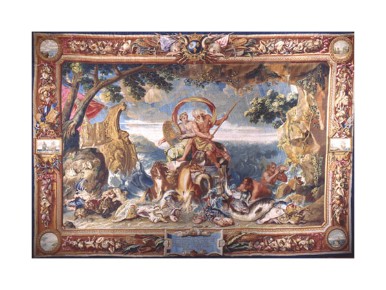

The stoning of Saint Etienne. Is the first painting of Dutch artist Rembrandt, painted in 1625 at the age of 19. This work is inspired by the martyrdon of Saint Stephen which is recounted in acts 7.
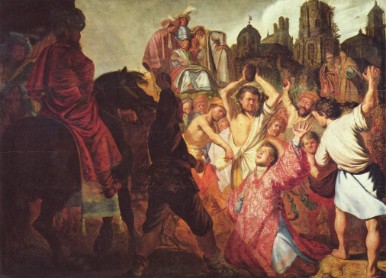
St Etienne was a young deacon in Jerusalem and by the leadership of Saul-Tarsus and 25 others or so Saint-Etienne was condemned. Saul-Tarsus is Paul the Apostle who was later christianized and followed Jesus. His birth is 5 A.D. to 67 A.D. He spread the Gospel through Asia and Roman Territories. He was a Roman Citizen of Jewish heritage and was part of a group dedicated to violently persecuting the early Jewish Christianity in Israel when he was known as Saul. more of Paul the Apostle can be found at wikipedia.

Conversion of Saint Paul
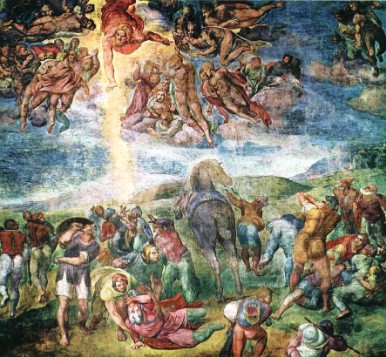
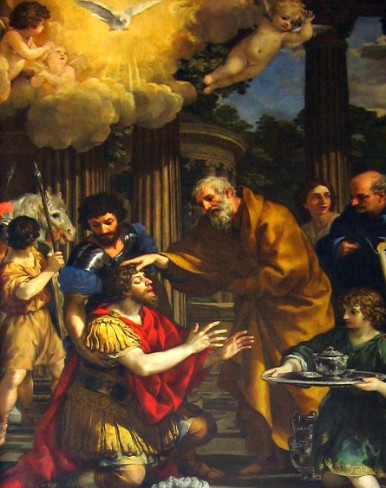
Marcella is an Italian given name, the feminine version of Marcello (Mark in English). Marcella maens warlike, martial, and strong. It could also mean 'young warrior'. The origin of the name Marcella is latin.
Latin is an Italic language originally spoken in Latium and Ancient Rome. It and Ancient Greek derive from Ancient Proto-Indo-European language. Latin has been, and currently is, used in the process of new word production in modern languages from many different families including English.
Latin and its (daughter Romance language as far as it is described) are the only surviving branch of the Italic language family. Other branches, known as Italic languages, are attested in documents surviving from early Italy, but were assimilated during the Roman Republic. The one possible exception is Venetic, the language of the people who settled Venetia, who in Roman times spoke their language in parallel with Latin.
Veneto ~ is one of the 20 regions of Italy. It had been for a millemium an independent state, known as the Venetian Republic, and the region was annexed to Italy in 1866 after the brief Austrian and French rule. It's capital is Venice, which for a long period ruled one of the vastest and richest maritime republics and trade empires in the world. The inhabitants of Veneto Latin Venetia are considered by Italians as "the people" since they as a people refuse to subsume within the notion of 'Italian' ...wikipedia.com _---...---_ Perhaps as a people of Veneto they were once called Venetians but that may be rude since they were of most invested with other personage and thus how the history will reveal through Anciently DeLancey.
Saint Marcella ~ 325-410 She had a lifestyle of abstinence in Ancient Rome. After her husband's early death, she decided to devote the rest of her life to charity, prayer, and mortification of the flesh. When the Goths invaded in 410, she was brutalized, and died from her injuries. She knew well saint Paula and Saint Jerome, and she was called by him as "the glory of the ladies of Cadereyta".
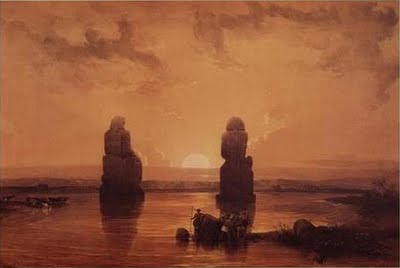
Next picture - Dagr - placed here on 7-16-2011 at 10:37 p.m.
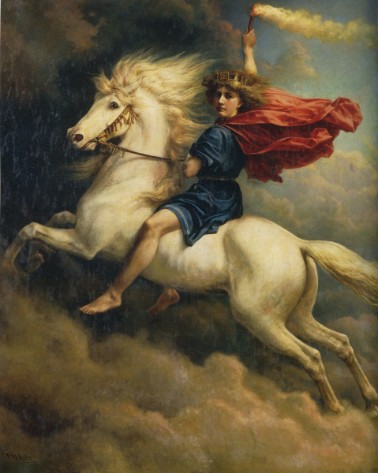
<a rel="license" href="http://creativecommons.org/licenses/by-sa/3.0/"><img alt="Creative Commons License" style="border-width:0" src="http://i.creativecommons.org/l/by-sa/3.0/88x31.png" /></a><br />This work is licensed under a <a rel="license" href="http://creativecommons.org/licenses/by -sa/3.0/">Creative Commons Attribution-ShareAlike 3.0 Unported License</a>.
8:52 P.M. E.S.T. 12-5-2010 The Art of Government is true in what we do this has been going on throughout time. Although some portions of a government may not have the quality that others seek, this again is a form of art. Art is A Rightious Togetherness. In the beginning Governing had been something that just had to be. Infact in order to make a decision it had to be somewhat governed. A smile was a lesson as well as eating, walking and perhaps the dance. These terms were not even used long ago. This brings another form of Artistic Governing to the palete. Art for me is considered number one in the respected field of perception it creates, it allows, and is agreed upon. This now respectfully is somewhat of a reason or right doing, putting an ing at the end of reason allows it to perhaps carry-on. This reasoning now in a rightious degree brings talent or even by now tolerance or could it be togetherness one of which will be in order. My-self I would choose to have talent to express a reasoning to create togetherness as to allow it to carry-on. Here we go with Art Economics History before our time. This reasoning will allow me to describe what Art Economics History can do in the future. This inventory that I am inserted with here will also describe the low and high qualities of Government throughout the years. We all know what it's like when we see a default in government. A default is only something that can be fixed. Government will usually carry-on and be seen as an advancement to any society, working with Government is now the challenge of greatness and good behavior. I'm sure you will enjoy this, even if you don't except some of the contents which is just history and a little bit of my own thought. Either way enjoying something is of satisfaction. Infact in representation of my ancesters I hold a Faction the DeLancey Faction which represents many things, one is satisfaction whether you agree or disagree your satisfaction is noticed. Well it's almost Christmas, I may represent why this is, through of course my research. For I'll describe a little bit of current ability. Christmas is based on a Holiday. Preferably the birth of Christ which occured within the 1st Century A.D. though did you know there was a Holiday just about the same time as what we have now and was of the year in the 1st Century B.C. This Holiday was of three reasons, one was concerning labor which perhaps involves all three reasons. See the Scholars never stopped with their writings, studies, and all that busy caricular. Then we have Tax's. Then there was the working force in which circulated much of the economy towards its greatness. I beleive the Ruler of the day was called a Caeser this high figure at the place of Rome I think actually it was the City of Rome for there were many cities amongst Rome, had took apart an Oxen from its Plow relaxed it upon the great entry of the Palace which was upon many steps. The second relaxation was the tax, no one had to pay the tax for that time I think it was just a day I'm not sure, the third thing was that no Scholar, Teacher or benefactor to the knowledge did any work of that choice and matter. In fact the day was free of anything and all as well. This Holiday did go up till Jesus's day and is perhaps still a part of a Holiday we still celebrate. There is a picture I will relocate and post here, it is a drawing or some form of painting of the city and people, and the Oxen separated from its cart and or plow upon a great set of steps. Ok that was for the Holiday, getting back to things that are found through Art Economics History again. I'm getting better at this I have to be I enjoy it to much.
Treaty of Ancenis this was created through the League of the Public Weal. Francis II (Duke of Brittany) joined it against King Louis XI of France in 1465, invaded Normandy in 1467 on behalf of the dispossessed Charles de France (Louis XI's Brother), and allied himself with King Edward IV of England in 1468.
Pierre d'Amboise fought along side Joan of Arc with his brother Louis d' Amboise. Piere was Lord of Chaumont, Meilont, Sagonne, Les Rochettes, Asnieres (in Blesois), Saint-Verain, Bussy, Previlly, Les Bordes - Guenond, Moulins, Charenton, ect; he was ambassador to Rome, under Louis XI. He was the son of Hugh VIII of Amboise who was killed at the battle of Agincourt. Pierre's mother was Jeanne de Guenand. Pierre and de Bueil had 17 children.
I am doing some research of Picardy and Lombardy. Realizing Picardy was created later it is still interesting how the 'ardy' at the end of these place names are alike. There are two people I've found so far holding this name though with an s to it as Ardys I and Ardys II and are from the time of Lombardy's era.
Lombardy; Capital Milan. 1st habitat by! Etruscan tribes who founded the city Mantua and spread the use of writing; later starting from the fifth centruy B.C. <(this may not be acurate by the invasion of the Celtic Tribes, and founded several cities. These people perhaps mixed and including (Milan) and extended their rule to the Adriatic Sea in 194 B.C. after the Roman take over halted expansion which led Romans in the Po Valley from the 3rd century onwards. The Romans made a provence of the area they had acumilated of what is Lombardy now and was before said name Lombardy given the name Gallia Cisalpina ("Gaul is on the nearer side of the Alps"). The Romans left behind a wide culture of trade, roads and agriculture. Pliny the Elder was born here in (Como) and Virgil (in Mantua). The temporary moving of the Capital of the Western Empire to Mediolanun (Milan) was very strategic and was emphasized again in the late antiguity as the strategic role of Lombardy. Moving ones capital from one place to another seems to have went on as far as the 14th century this period is describing of the Knights Templar my research continues with the 'mobile capital' it is for sure this accured in America around the 1700's before it was created as the United States, which we call Washington D.C. it started in New York went to Pennsylvania then the District of Columbia. America's 5th College was started by a Charter Granted by the King of England by request of James DeLancey; this Kings College at the forming of the revolution was closed for a while then re-opened as Columbia College.
Langobardia Minor (the duchies of Spoleto and Benevento) while the territories which remained under Byzantine control were called "Romania (hence the name of today's Romagna) and had as a fulcrum the Evarchate of Ravenna. Page one of the site expresses many names affiliated as Guy or the female version as Guyonne, here at the Duchy of Spoleto we have Guy III of Spoleto who died 12 December 894 he was King of Italy 889 and Holy Roman Emperor 891 he married Ageltrude a daughter of Adelchis of Benevento his son was married to Lambert.
Guaimar I of Salerno 855-901 was the prince of Salerno from 880>? maybe to his death. His parents were Prince Guaifer and Landelaica, daughter of Lando I of Capua. I will be doing some research on the names Lando and Landelaica as they have similarities of DeLancey.
Salernitan Independence 1078
Alice of Normandy (or Adekiza, Adelaide or Aelis) was born circa 1002 died around 1038, was the daughter of Duke Richard II of Normandy -'there's that _ard_ again'- and Judith of Brittany (c,982-1017). Judith was the daughter of Conan I, Duke of Brittany and Ermengarde of Anjou "ard again", and mother of Robert the Magificient _~notice how cient is also in Anciently I just thought I'd put that in there~_ Judith was 1st wife of Richard the Good, Duke of Normandy married in 996 has 6 children: Richard 1002/4 duke of Normandy~ Adelaide 1003/5 married Renaud I, Count of Burgandy~ Robert 1005/7 duke of Normandy~ William 1007/9 Monk of Fecamp d.1025~ Eleanor 1011/3 married Baldwin IV, Count of Flanders. I take notice of the 'lan' in Flanders as well as in England and DeLancey.~ Matilda 1013/5 Nun at fecamp d.1033 Their mother Duthess Judith died 1017 and is buried at the Abby of Bernay which she founded.
Alice of Normandy had four children 1.Burgundy 1020-1087 ~ 2.Gui de Brionne or Guy of Burgandy (1025-1069) educated at the court of Normandy, who would succeed the Duchy of Normandy against his cousin William of Normandy (later William the Conqueror), but had to leave his county of Brionne and Vernon in Normandy, after being at the head of the coalition of the barons of Normandy, which was defeated at the Battle of Val-es-Dunes in 1047. It is known that Guy de Brionne found refuge with his uncle Geoffrey II of Anjou. He later attemted to usurp the county of Burgundy to his brother William. ~ 3.Hugh 1037-1086 Viscount of Lons-le-Sauncier, sire Montmorot, Navilly and Scey married to Aldeberge Scey. They had a son Montmorot Thibert, founder of the house Montmorot (alias Montmoret). ~ 4. Falcon or Fauques of Burgundy.
Geoffrey II, Count of Anjou from 1040 to 1060. he was the son of Fulk the Black called Nerao or le Noir. His father was Geoffrey Greymantel who married Adelaide of Vermandois. Greymantel's father is Fulk II son of Fulk the Red who was the son of Ingelger of Angers and Resinde "Aelinde" D'Amboise, was the first count of Anjou from 898 to 941. He increased the territory of the viscounty of Angers and it became a county around 903. During his reign he was permanently at war with the Normans and the Bretons. he accupied the county of Nantes in 907, but abandoned it to the Bretons in 919. He married Rosalie de Loches, he died around 942 and was succeeded by his son Fulk II. Ingeler (or Ingelgarius) was a Frankish nobleman, who stands at the head of the Plantagenet dynasty some of his later family members believed him to be a son of Tertullus (Tertulle) and Petronilla, ))there is the "lan" in Plantagenet. He was born in Rennes. Fulk II died at Tours 11, November, 958 of only two children Geoffrey I and a daughter Adelais of Anjou whom married five times his family by this has lived on. Again research continues...10:40 P.M.
Gyges of Lidia was the founder of the third or Mermnad dynasty of Lidian kings and reigned from 716 B.C. to 678 B.C. or from (680-644 BCE). He was known to be the father of Mirsus, one of the leaders of the Great Army of Darius 521-486 B.C. Candaules was King of the Ancient Kingdom of Lidia before Gyges and succeeded Meles. This is from wikipedia.
10:10 p.m. e.s.t. 7-16-2011 _________go to_ http://fabpedigree.com/s002/f431198.htm Guy (8th Count) de Laval male line de Laval (& de Vitre, de Craon, (Florence) of Hainaut, (Alice) (Princess) of England, (Baron) de Montmorency, de Beaumont. Female side : (Sire) de Vitre, de Mayenne, de la Guerche, Guy (Gui) (Viscount) de Thouars , (Duke) of Brittany, (Duchess) of Bretagne, de Huntington, (of Richmond, or not).
Matthieu II de Laval aka Mathieu (Baron) de Montmorency; Constable of France. -mother> Laurance (Florence) of Hainaut (?-1181) daughter to Alice (Adelheid ? Elvide?) de Numar and Baldwin IV (Count) of Hainaut. Alice's parents are Godfrey I (Godefroid) (Count) de Namur and Ermesinde (I; Heiress) de Luxemburg daughter to Conrad I (Count) of Luxemburg and Clemence de Poitou. Baldwin IV parents are Baldwin (Baudouin) III (Count) de Hainaut and Yolande de Guelders. /s035/fo49394.htm
Early Family connections - Sweden 8th Century early. Marriage within the next part of the century to Dagr (King) of Westmore; whom Adela (Gerloc) (poss. de Normandy) derives from. Her female line de Rennes, de Selis, de Valois and those two as well combined as Pepin (I; Count) de Senlis de Valois and of another marriage of a daughter of Gurvand. Adela's parents are possibly Rollo (Hrolf Rollon Rou Robert) "the Dane" Ragnvaldsson and Poppa (Poppacia) de Valois.
( La fille ainee de l'Eglise)
Clotilde 475-545 was born in Burgundian Court of Lyon the daughter of King Chilperic II of Burgundy and his wife Carentena Chilperic II reigned Lyon and Valence. His father was Gondio d.473 his brothers reigned Gundobald at Vienne and Godegesil at Geneva. Remember Guy II of Laval the Bald my research will see if there is a close relation here since the names resemble each other some what. It is so that Lyon is a variation of DeLancey or could it be the other way around. I'm thinking the Lan is of some significance. So here are two posible connections to~of DeLancey and Guy II of Laval the Bald and Gundobald and father who reigned Lyon. This future information I find will definetly be on this site perhaps page two or three. Now is 12-6-2010 at 7:22 P.M. E.S.T.
delta of the Yssel.....This is a great find because I also found some names starting with Y mainly female although there could be male also. I will have them here soon. I am currious of York and will find a connection if there is one on the spelling and meaning of how these names that start with Y came to be. It is a most ubundant challenge for me to do this with all literaturic ventures, so every now and then you will see my ambitious way of study being shared with all.
Next we have, The Treaty of Verdun August 843. A treaty of three sons of Louis the Pious who was King of Aquitaine from 781 also King of the Franks and Co-Emperor (as Louis I) with his father Charlemagne, from 813. Louis reconquered Barcelona from the Muslims in 801 and re-asserted Frankish authority over Pamplona and the Basques south of the Pyrenees in 813. His nephew was Bernard of Italy, Bernard married Cunigunda of Laon in 813 they had one son, Pepin, Count of Vermandois. His children are: ~Bernard 844 after 893, Count of Laon: ~Pepin 846-893, Count of Senlis and Lord of Valois 877-893: ~Herbert I of Vermandois 850-907. Cunigunda Pepin's wife may be a daughter of Theodoric Nibelung.=Nibelungid Territory/ were a Frankish family descended from childebrand the younger full brother of Charles Martel. Herbert I of Vermandois married Bertha de Morvois They had ~Herbert II of Vermandois 880-943: ~Beatrice of Vermandois married King Robert I of France: ~Cunigunde of Vermandois d.943: ~Adele of Vermandois. Beatrice had Richilda of France Robert was Marquis of Neustria also another child ~Hugh the Great, Duke of the Franks who was father of Hugh Capet. Hugh the Great 898-16 June 956 King of the Franks Count of Paris and nephew of King Odo. He was born in Paris Isle-De-France, France. Hugh's 1st wife was Eadhild, daughter of Edward the Elder, King of England, and sister of King Athelstan. In 936 Hugh married Hedwige of Saxony a daughter of Henry the Fowler of Germany and Matilda of Ringelmein. Hugh and Hedwige's daughter Beatrice married Frederic I Duke of Upper Lorraine thus making Hugh and Ancester of the Habsburg family, from their son Hugh Capet sprung forth the lineage of many kings of France, and descendants including King George III, Queen Victoria and Elizabeth II.
Jacques of Chatillon d.1365 Lord of Ancre
The place name Tours evolved in the 4th century, a Gallic Period. It was a place point important for crossing at Loire. This area became apart of the Roman Empire during the 1st century a.d. The city was named "Caesardunum" (Hill of Caesar) The original Gallic name was Turones, became 1st "Civitas Turonum" then "Tours". It was at this time that the Amphitheatre of Tours one of the five largest in the Empire, was built. It is of importance that this is a major route and crossing point throughout time. In the 6th century we have Grogory of Tours author of The Ten Books of History. At the 9th Century, Tours was at the rebirth of the Carolingion Period and its dynasty. In 732 A.D. The Battle of Tours involving Charles Martel who stoped a large army led by Abdul Rahman Al Ghafigi which came from Al-Andalus these horseman advanced 500Km deep into France. This territory was in despute by the Counts of Blois and Anjou. Anjou was victorious in the 9th Century. Tours still throughout its remaining years has been of interest Guy of Tours may be of a close descend to the DeLancey Family.
Margrave is a medieval heretary nobleman with military responsibilities in a border province of a kingdom. A margrave had larger duties than a Lord. The title derives from March and Graf "Count" It is used in other languages and In English is termed Marcher Lord.
Bernhard I who died 1011 was the Duke of Saxony his father was a Margrave of Saxony who is Herman von Stubenskom 860-967 and Ermengarde of Nantes. Herman is considered the first Billung duke of Saxony. 9:37 p.m. e.s.t. 12-6-2010
12-12-2010 9:46 P.M. E.S.T. Raoul I of Lusignan or Raouls I de Lusignan (1160 or 1164/1165 - Acre, Palestine, 1217 or Melle, May 1,1219), was the second son of Hugues de Lusignan, Co, Seigneur de Lusignan in 1164 (c. 1141-1169), and wife, married before 1162, Orengarde N. who died in 1169, and grandson of Hugh VIII. He became Seigneur d'Issoudun before 1200, Count of EU by marriage, Seigneur de Melle, de Chize, de Civray and de la Mothe. He was buried at the Priory of Fontblanche, in Exoudin. He married 1210 Marquerite de Courtenay Dame de Chateauneuf-sur-Cher and Margraveine of Namur (annuled before 1213. Born 1194-Marienthal, July 17, 1270 and buried there. 2nd wife Yolande of Namur (1229-1237) daughter of Peter II of Courtenay also Margravine of Namur search Margravine of Namur & just Margravine which is a wife of a Margravine. Marquess or Marquis is a nobleman of hereditary rank in various European monarchies and some of their colonies. {ROYAL AND NOBLE RANKS} Emperor-Emperess.King-Queen.|Archduke-Archduchess Grand Duke-Grand Duchess along with Grand Prince-Grand Princess with Infante-Infanta|.|Marquis-Marquise along with Margrave-Margravine|.|Count-Countess with also Earl-Countess, Viscount-Viscountess|. Baron-Baroness, Baronet-Baronetess along with Noble,Edler Von,Ritter,Erfinddes,Hereditary Knights along with Knight-Dame.
Hugh VIII the Brown of Lusignan or Hughes II de la Marche or Hughes VII and II le Brun de Lusignan (1065-1151) Sire de Lusignan, Couhe and Chateau-Larcher and Count of La Marche, was son of Hugh VI of Lusignan. He was one of the many notable Crusaders in the Lusignan Family. In 1147 he took the cross and followed King Louis VII of France on the Second Crusade. Hugh married before 1109 Sarrasine or Saracena de Lazay (1067-1144) This Saracena or name is of a widow of Robert I Count of Sanseverino. Their children are :~Hugh VIII of Lusignan ~ William de Lusignan, Seigneur d' Angles ~ Rorgon de Lusignan ~ Simon I de Lusignan, Seigneur de Lezay, who died unmarried without issue ~ Simon II de Lusignan (Deux Sevres, bef 1180-1200, Seigneur de Lazay, married before 1195 NN. The parents of~> Hugh I de Lezey, Seigneur de Lezey, married to NN, the parents of~> Claire I de Lezey, Dame de Lezey married to Pons II d' Aulnay, Vicomte d'Aulnay
Hugh VII other children ~ Galeran de Lusignan ~ /Enor or Aenor de Lusignan (b. c. 1130), married before 1144 Geoffrey or Geoffroy V de Thouars ( c. 1120 - aft. 1176), Vicomte de Thouars, son of Aimery VI de Yhouars, Vicomte de Thouars, and wife Agnes=Mathilde de Poitiers source wikipedia which sources article Hugh VII of Lusignan by Painter, Sidney. The Lords of Lusignan in the Eleventh and Twelfth Centuries, 1061 Father was Hugh VI son of Hugh V son of Hugh III albus son of Hugh II Earus son of Hugh I Venatior he is noted in the Chronicla of Saint Maixent. he was Lord of Lusignan, the family originated in Poitou near Lusignan in western France. In the 10th century a branch of the family came into the control of the Kingdoms of Jerusalem and of Cyprus while in the early 13th century the main branch succeeded in the Counties of La March and Angouleme. As Crusader Princes in the Latin East, they soon had conections with the "Hethumid" rulers of the Kingdoms of Cilicia which they imherited through marriage in the mid-14th century. More information of how the Lusignan Dynasty died out.. go to wikipedia.com search Lusignan Dynasty (at wikipedia go to the bottom of the page where it says External links and click on "Lusignan" it discusses alot of Guy a son of Hugh the Brown. Till Next time 10:41 P.M. E.S.T.
3-23-2011 8:57 p.m. The Piramid of Amenemhat III at Hawara, in Fayoum Province. www.bbc.co.uk/history/ancient/agyptions/greatdyn...
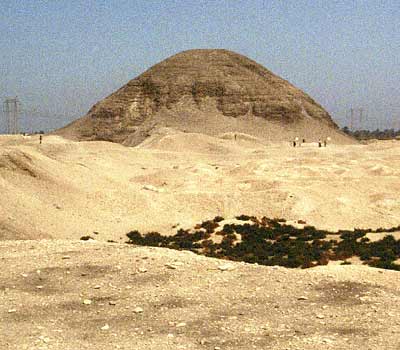
12th Dynasty. The new line of Pharoaha moved the capital back north from Thebes and resumed the building of Piramids for their tombs. The 12th Dynasty was one of great prosperity, which also reestablished Egyptian control of Nubia, an area that straddled what is today the border of Egypt and Sudan. It was an important source of raw material - especially gold - and was a crucial conduit of trade from central Africa. Another thriving area during the period was the Fayum, an oasis area 100 km (62 miles) south of Cairo, which saw major irrigation and other public works. Amongst these were two kings pyramids, and of them being the monument shown here, of Amenemhat III at Hawara. Unusually, it was built of mud-brick rather than stone and it had a gargantuan temple built on the south side. This temple, known as the 'Labyrinth', was destroyed 2000 years ago, leaving only the fragments visible in the forground.

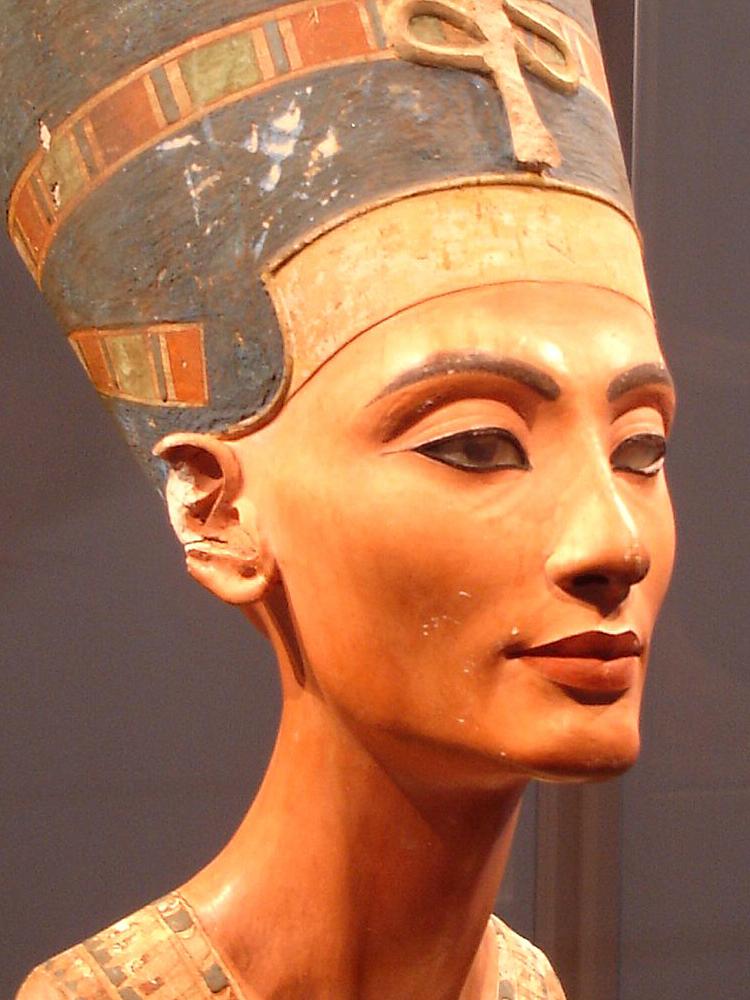
6-21-2011 11:10 a.m. e.s.t. Beatrice of Brittany 1295-1384 married Guy X, Lord of Laval
Beatrice Countess de Montfort l'Amaury December 1248/1249-9 March 1312 was the wife of Robert IV of Dreux, Count of Dreux 1241 - 12 December 1282, and the ancestress of the Dukes of Brittany. She is the only child of Jean I de Montfort, Count of Dreux and Jeanne, Dame de Chateaudun. Her paternal grandparents were Amaury VI, Count of Monfort and Beatrice of Burgundy, and her maternal grandparents were Geoffrey VI, Viscount de Chateaudum and Clemence des Roches. Her Great-Grandfather Simon de Montfort, 5th Earl of Leicester was a Prominent leader of the Albigensian Crusade. Jeanne had a daughter through a 2nd marriage by Jean de Brienne Grand Butler of France, by whom she had a daughter Blanche de Brienne, Baroness, Tingry (1252-1302) who married William II de Fiennes, Baron of Tingry. Beatrice was married to Robert IV of Dreux, Count of Dreux, Braine and Montfort -I Amaury in 1260, when she was about eleven years old. He was the son of John I of Marie de Bourbon. The marriage produced six children. Robert inherited the titles of Dreux and Braine following the death of his father in 1249, and after his marriage succeeded to the title of de Montfort by right of his wife.
John of Brienne (1155-27 March 1237) was a French nobleman who became King of Jerusalem by marriage, and ruled the Latin Empire of Constantinople des regent. Son of and 2nd child to Evard II, Count of Brienne, in Champagne, and Agnes de Montfaucon. John married the heiress (Mary) Maria (daughter of Isabella and Conrad of Montferrat, assuming the title of king in right to his wife. His wife passed 1212, who left a daughter, Yolande (also known as Isabella), soon afterwards he married the princess Stephanie, daughter of Leo II of Amenia.
Yolande II of Jerusalem ~ (1212-25 April 1228 Andria Italy) also known as Yolande of Brienne, was a princess of French origin who became monarch of Jerusalem. Marriage with Frederick II, King of Germany and Sicily, he was coronated as Holy Roman Emperor, in the city of Acre, by the proxy. Their second child and only surviving son Conrad IV of Germany (25 April 1228 - May 1254 was King of Jerusalem (as Conrad II 1228-1254 of Germany (1237-1254 and of Sicily as Conrad I; 1250-1254. Born in Andria and lived in Italy until 1235. War of the Lombards
Henry (VIII) of Germany (VIII) (1211-12 February 1242) was King of Sicily and older brother of Conrad IV of germany. Son of Emperor Frederick II. He was the seventh -Henry VII only and without of place title name because there was a Henry VII termed, Holy Roman Emperor. His mother is Frederick II first wife ~ Constance of Aragon. His maternal grandparent were Alfonso II of Aragon and Sancha of Castile. He was born in Sicily.
See. Dukes of Swabia family Tree
Marie of Montferrat ~ (or Maria of Jerusalem) (1192-1212), was Queen of Jerusalem, the daughter of Conrad of Montferrat and Isabelle, Queen of Jerusalem.
Alice of Champagne ~ 1195/96-1246 daughter of Queen Isabelle I of Jerusalem, and her third husband Henry II, Count of Champagne. She was Queen Consort of Cyprus by her marriage to Hugh I of Cyprus. She and her sister Philippa spent part of their life fighting for their father's homeland of Champagne, over another branch of their family.
Shortly after Alice's birth, her father negotiated a treaty of reconciliation between the kingdoms of Jerusalem and Cyprus. The plan was to marry his three daughters; Marie, Alice, and Philippa to Amalric of Cyprus' son's Guy, John and Hugh. Alice and Hugh had three children Mary of Lusignan, Countess of Brienne before March 1215-5 July 1251 or 1253, who married Count Walter IV of Brienne in 1233 (he b. 1200 - murdered at Cairo, 1244. She was mother to Hugh of Brienne 1240-1296, who was Count of Lecce and Brienne and pursued the kingdoms in Levant for himself when his uncle Henry's line began to go extinct. 12:10 p.m. ~ 7:37 p.m. This claim fell to her descendents. They are the heirs-general of King Amalric I of Cyprus and Hugh I himself second child of Alice, Isabella de Lusignan (1216-1264), who married Henry of Antioch, and who was the mother of Hugh III of Cyprus and ancestress of the line named later as the second dynasty of Lusignan. Her the child, son of Alice is Henry I of Cyprus 1217 ~ 1253 namesake of his maternal grandparents, who became King of Cyprus upon his father's death in 1218, with his mother acting as regent.
Counts of Saint-Pol
Jean I de Montfort 1249 Cyprus I Compte de Montfort from 1241-1249 son of Amaury II, Compte de Montfort, and of Beatrice de Bourgagne.
Aurthur II, Duke of Brittany
Simon de Montfort, 5th Earl of Leicester.
Anne de Laval (1385 - 1466) the fourth daughter 1st girl of 2 0f 5 children, married in 1424 to Louis I de Bourbon-Vendome, who as Louis I, Count of Vendome (1376 - December 21, 1446 Tours) younger son of John I, Count of La Marche and Catherine de Vendome, was Count of Vendome from 1393 and Count of Castres from 1425 until his death.
10:50 p.m. Treaty of Bretigny ~ Between King Edward III of England and King John II (The Good) of France, signed on May 8, 1360. The treaty was signed several years after John was taken as a prisoner of war at the Battle of Poitiers (19 September 1356). The ensuing conflicts in Paris between Etienne Marcel and the Dauphin (later King Charles V) and the outbreak of the Jacquerie peasant revolt weakend French bargaining power.
Etienne Marcel (died 31 July 1358) was provost of the merchants of Paris under King John II, called John the Good (Jean le Bon). He belonged by birth to the wealthy Parisian Bourgeoisie, being the son of a clothier named Simon Marcel and of Isabelle Barbou. Provost of the Third Estate, played a leading part in the Estates General. he became Hostile to the throne by endeavoring Charles the Bad, King of Navarre in opposition to John King of France. Etienne murdered the marshals of Champagne Jean de Conflans and Normandy Robert de Clermont before the princes eyes. he was killed by the guards at the Porte Saint-Antoine. John the Good forbade the great edict of reform, thus becoming an enemy of Etienne.
Great edict of reform ~ known as the Great Ordinance of 1357 ~ was an attempt by Etienne Marcel to impose limits on the French monarchy, in particular in fiscal and monetary matters.
Aymer de Valence, 2nd Earl of Pembroke 1275-23 June 1324, was a Franco-English nobleman. Though primarily active in England, he also had strong connections with the French royal house. One of the wealthiest and most powerful men of his age, he was a central player in the conflicts between Edward Ii of England and his nobility particularly Earl Thomas of Lancaster. He was the son of William de Valence son of Hugh X, Count of La Marche and Isabelle of Angouleme. He married Joan de Munchensi granddaughter of William Marshal. Her birth is 1230 - death September 20, 1307 grandparents are William Mashall, 1st Earl of Pembroke and Isabel de Clare, 4th Countess of Pembroke suo jure.
Aymer married twice 1st before 1295 to Beatrice, daughter of Raoulde Clermont, Lord of Nesle in Picardy and Constable of France. Beatrice died in 1320. He married Marie de St. Pol and Butler of France. He never had any legitimate children, but he had an illegitimate son, Henry de Valence, whose mother is unknown.
Matilda of Brabant, Countess of Artois 1224 - September 29, 1288 was the eldest daughter of Henry II, Duke of Brabant and his first wife Marie of Hohenstaufen. Her 1st husband is Robert I of Artois. Robert was the fifth son of Louis VIII of France and Blanche of Castile, they had two children. Blanche of Artois married 1st to Henry I of Navarre and 2nd to Edmund Crouchback, 1st Earl of Lancaster. Matilda's second marriage is to Guy III, Count of Saint-Pol because Robert was killed participating in the Seventh Crusade on February 8, 1250. There were six children of it ~ Hugh II, Guy III, Jacques I, Beatrice, Jeanne, Gertrude all of sugnificance to Artois, Saint-Pol, Blois, Chatillon, Leuze, House of Bourbon, Eu, Chateauroux, and Mechelen, and would go on to other nobilities, also connected to Navarre, England, France, and Castile.